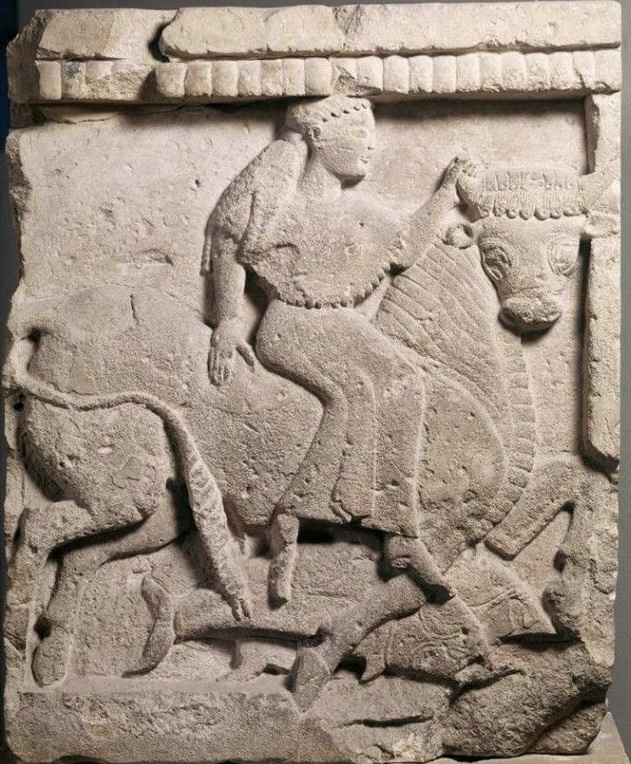The early Greek colonists of Sicily were horse-mad and temple-crazy, and conspicuous consumption on took its most grandiose form on the numerous Doric temples they erected.
Selinus (modern Selinunte) was the the western most of the Greek colonies, founded in the second half of the 7th century B.C., spread across two craggy hills over-looking the Mediterranean, and eventually would boast over a dozen temples monumentalised in stone. The sheer exuberance with which these temples are dedicated sets them apart. Among the earliest (ca. 570 B.C.) on the Acropolis, was the mostly demolished “Temple Y” which was relatively small and once decorated in the Doric style, with a metope-triglyph frieze.

And this is my very very favorite metope: it shows Europa riding side-saddle on a bull. The Phoenician princess caught the eye of insatiable Zeus, who transformed himself into a white bull to seduce and abduct her, and take her over the water to establish the royal family of Crete.
The remarkable thing about this representation is the way the bull is so clearly swimming! His forelegs are extended to power through the water, his back legs are drifting along, and his tail has floated forward against his flanks. To reinforce the point, two large fish swim along between his legs. You can almost sense the buoyancy! And what better image for intrepid settlers on the westernmost outskirts of the Greek world.
The metopes were excavated in the 19th century and are now displayed in Palermo’s Archaeological Museum (well worth a visit!).



